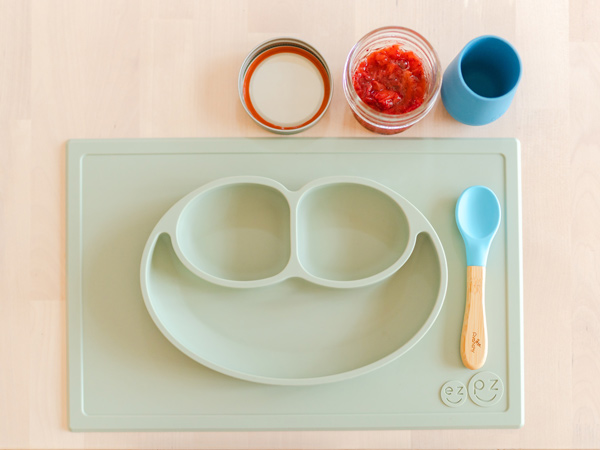One question in particular might pop up frequently when it comes to first time parents: “Is my baby getting enough?” Once the paediatrician gives you the green light, it’s time to start your little one on solids – but this can be a more daunting task than it seems. As your baby adjusts to new tastes and textures, you’ll find yourself obsessing once again – this time about what’s safe and where you should begin. We’ve whipped up this short guide to help you get started.
When to start solids?
The World Health Organization‘s guidelines suggest exclusively breastfeeding for the first six months of life. Your paediatrician will guide you as to when your baby is ready to make the transition to solids, which is usually anywhere from 4 to 6 months and onwards. Here are a few signs of readiness to look out for:
- Baby can sit up on their own
- Baby has head and neck control
- Baby takes an interest in your food
- Baby opens their mouth when offered food
- Baby grasps at and brings objects to their mouth
- Baby swallows food instead of spitting it out
What solids to choose?
You can start your little one on a number of fruits, vegetables, grains and proteins, as long as they’re nutritious. Here are a few to kick you off:
Apples
Apples are the perfect first fruit, as they’re neither too sweet nor too sour – plus they contain all the good stuff your baby needs. Apples contain a wide variety of antioxidants, as well as pectin, a soluble fibre that helps to regulate your baby’s bowel movements. (You’ll find that there may be a little trouble in this department as soon as you start introducing solids.) Remember to steam and puree before giving them to your little one – you could even include pears, which are also high in fibre.
Avocados
When mashed, avocados are creamy, smooth and easy to swallow – and they have the highest protein content of any fruit. They also contain monounsaturated fat (the “good” kind of fat) that helps prevent heart disease.
Bananas
This one is both high in fibre and only requires mashing. Bananas are also high in carbohydrates, meaning they’ll keep your little one fuller for longer. Make sure to look for the ripe ones.
Sweet potatoes
Sweet potatoes contain potassium, vitamin C, fibre and beta-carotene. They’re naturally sweet and make for the smoothest puree when cooked properly. They also pair well with just about any other vegetable – or fruit.
Broccoli
Broccoli contains high amounts of vitamin C, beta-carotene, folic acid, iron, potassium and fibre. (Make sure to steam them though, as they lose their vitamin C content when boiled.) Because broccoli isn’t the sweetest vegetable, you might want to introduce it before sweeter veggies or mix it in with sweet potato or butternut.
How to introduce solids?
- Be sure to check which foods need to be cooked and how.
- Don’t add any butter, salt or sugar to your little one’s food – remember, they don’t know any better.
- Avoid foods that can be a choking hazard (such as blueberries) or make sure they’re mashed properly.
- Introduce foods one at a time for a few days, so you can monitor any allergic reactions.
- Keep an eye on allergens such as eggs and dairy – and if you or your partner have any allergies, speak to your paediatrician about them before introducing them.
The information in this article is not intended or implied to be a substitute for professional medical advice, diagnosis or treatment. Please consult with your doctor before changing your baby’s diet.

